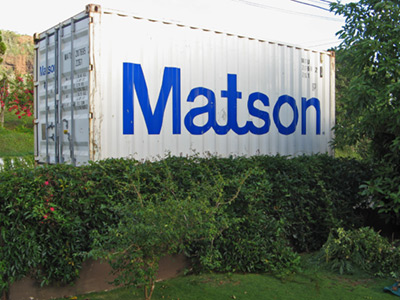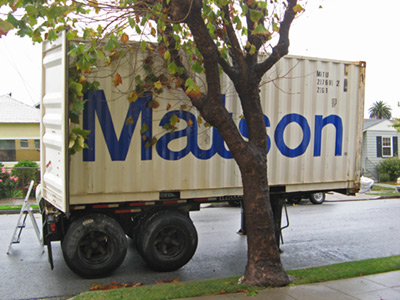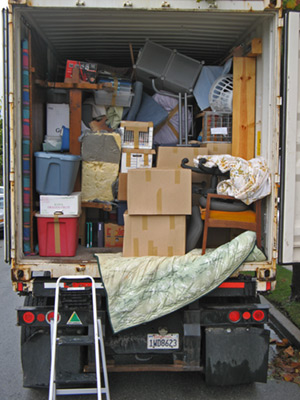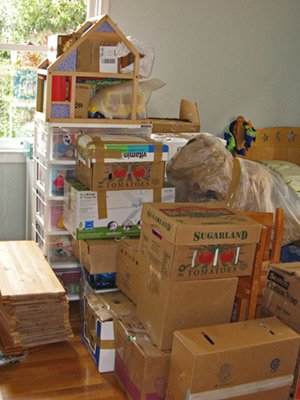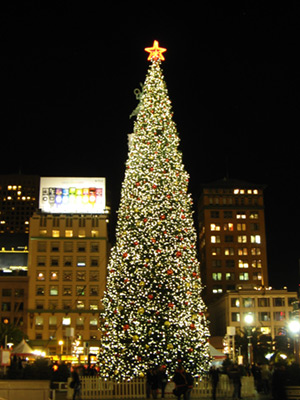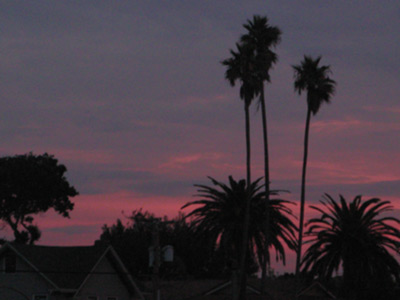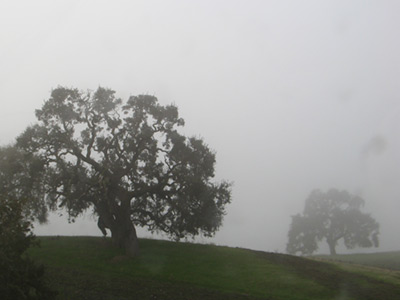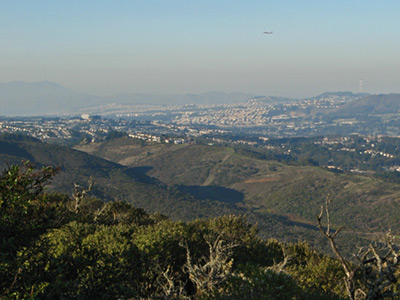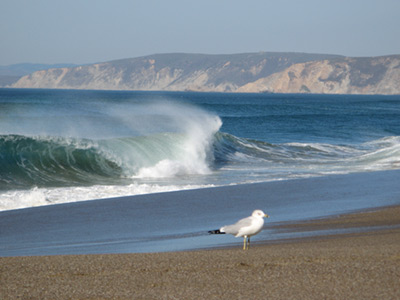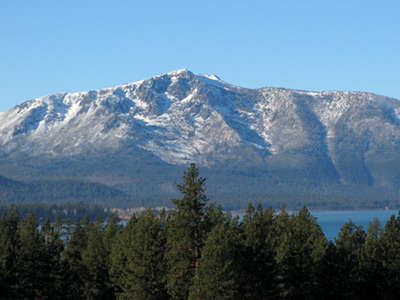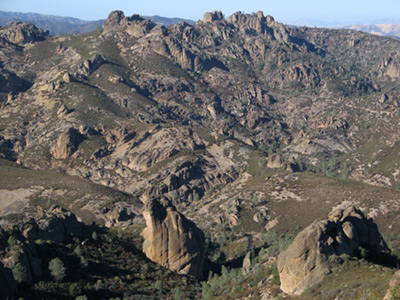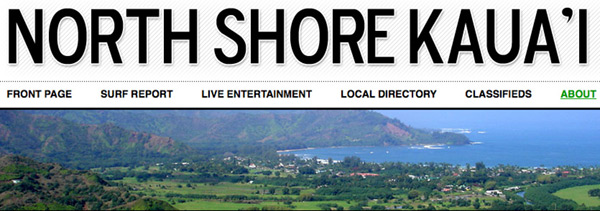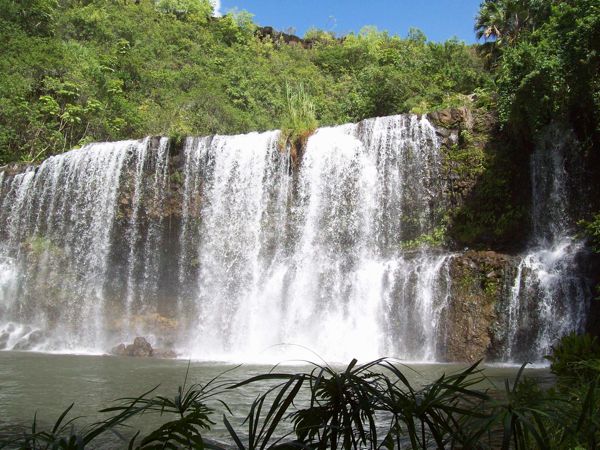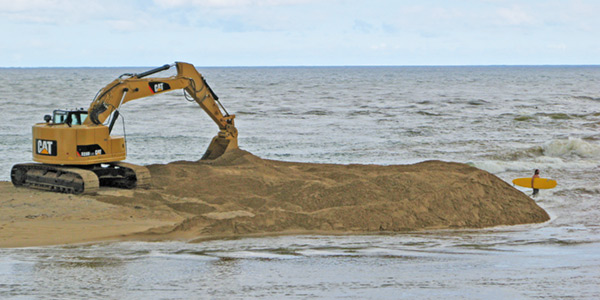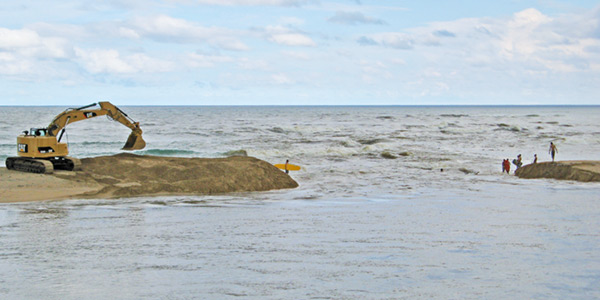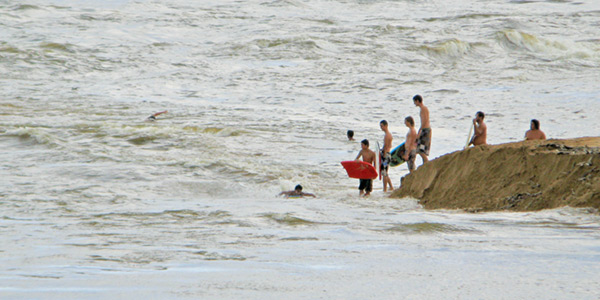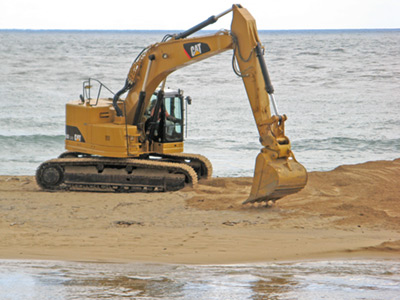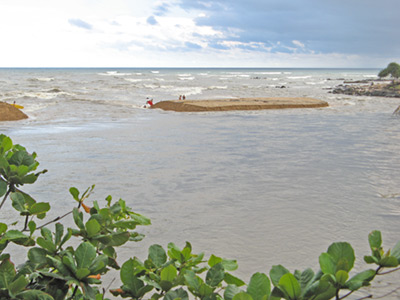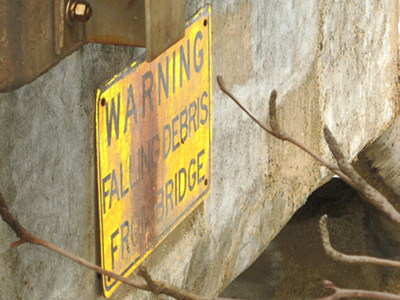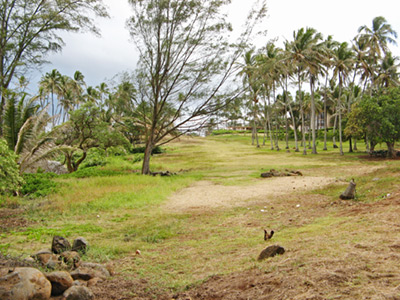As I said, I’ll be relying on contributions a bit more now, and this is a good one with some images of Kaua’i you don’t see everyday.
A while ago, a reader contacted me about doing some exploration along the Kalalau trail. Specifically, he wanted to see the terminal waterfall of the Waiahuakua stream, but from above. There are many waterfalls that kayakers along the coast get to see, but which are mostly invisible from the trail.
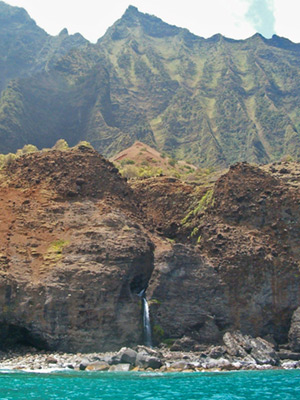 |
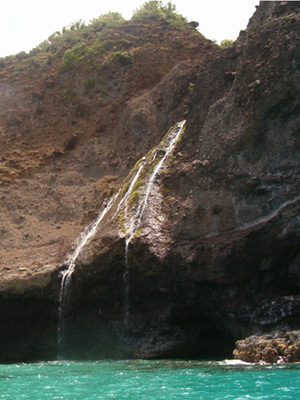 |
But the one at Waiahuakua is unique: it falls through the roof of a sea cave directly into the ocean. Here are my photos (rather blurry because I was using an old camera when kayaking):
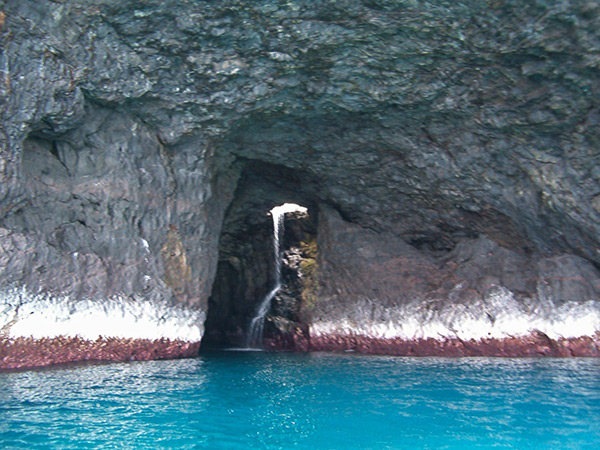
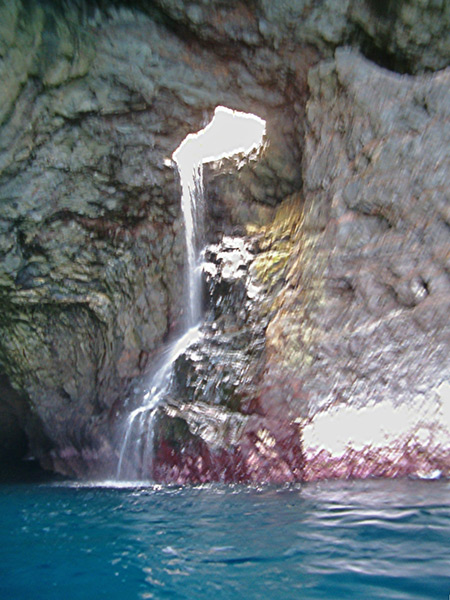
This is what I wrote to him:
Here’s what I know: some people have done it, but there is definitely no path and it is very dangerous.
There was a story in the paper a few years ago about some adventurers who swam to Waiahuakua, climbed up the waterfall, up to the trail and planned to hike back. Problem is, one of them knocked rocks onto the other and made her fall and injuring her even more. Here’s the link.
Granted that happened in the waterfall, and I imagine you just want to hike down and peek in the hole from the top, but still, I can’t recommend it. Looking at the topo, the trail in the valley is 400′ above sea level. From the contours, the first 200′ downhill are gradual, but the last 200′ above the ocean are very steep. The rock walls are crumbly and streambed rocks can be unstable, so you could easily get yourself into a pickle.
A few months later, the undeterred explorer wrote back to say he made it back alive and got a few nice pictures, including this view I’d never seen before:
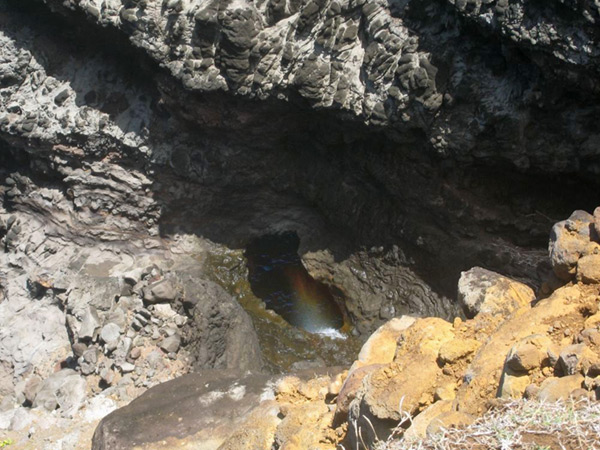
Source: used by permission
That’s the opening of the waterfall from above, you can see the stream disappearing into the hole. Major bonus points for the rainbow, too.
But the photo above shows you the kind of loose rock you should definitely avoid. This is probably where the rock was knocked off that injured the woman climbing the waterfall below.
As a counter-example, here is a pretty section of the lower stream where the rock conglomerate looks quite solid. But the problem with wild streams is that you can get trapped between two waterfalls, if you climb down something that proves to slippery or unstable to get back up…
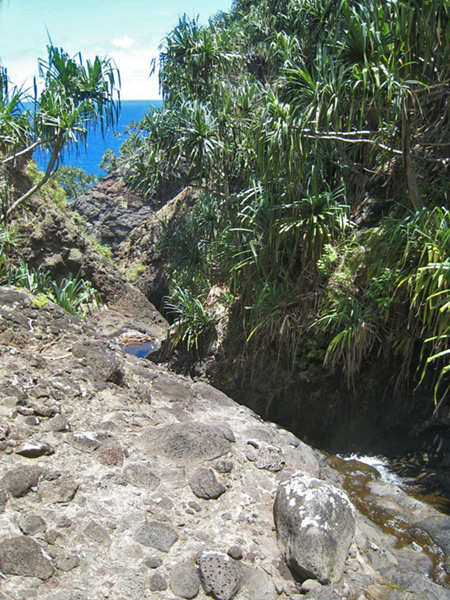
Source: used by permission
And finally, our intrepid explorer snapped this nice panorama of the upper valley. This perspective is seldom seen from land because the trail through Waiahuakua is constantly under thick tree cover and never affords an open view.
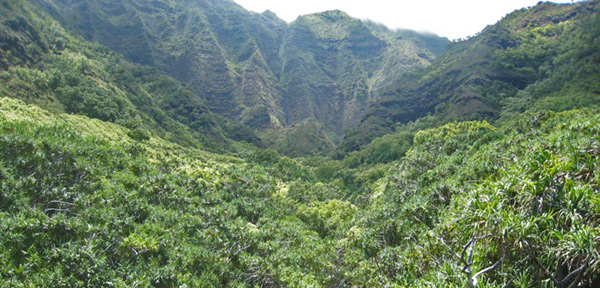
Source: used by permission
Still, I have to add this reminder:
WARNING: hiking off-trail and climbing rocks are dangerous activities. Unmaintained use-trails have many hazards including but not limited to: eye-level sticks, slippery mud, drop-offs concealed by vegetation, and unstable footing. Streams can flood quickly, and never cross high water (above your thighs). People have been swept away. Never free-climb volcanic rock because it is can be extremely unstable. People have fallen to their deaths. Exercise caution and proceed at your own risk.
These are the kinds of risks that have kept me from going to certain places myself, this one in particular. So I really do not recommend trying such dangerous and exposed off-trail adventures. There are alternatives, as I originally wrote to this fortunate explorer:
If you’re looking for adventure off the Kalalau trail, I suggest Hanakapiai and Hanakoa waterfalls, as well as the two spur ridges on either side of Hanakoa [mentioned here and here]. That’s where you can get some different perpectives on the Na Pali coast. In Kalalau, you can also explore up the valley and all the side trails, plus there used to be a trail on the ridge just inland from the 3 waterfalls, called Davis Falls.
I haven’t found that one yet, it was built by the boyscouts in the 80’s and wiped out by the hurricane [I found it and will have to post pics one of these days].





